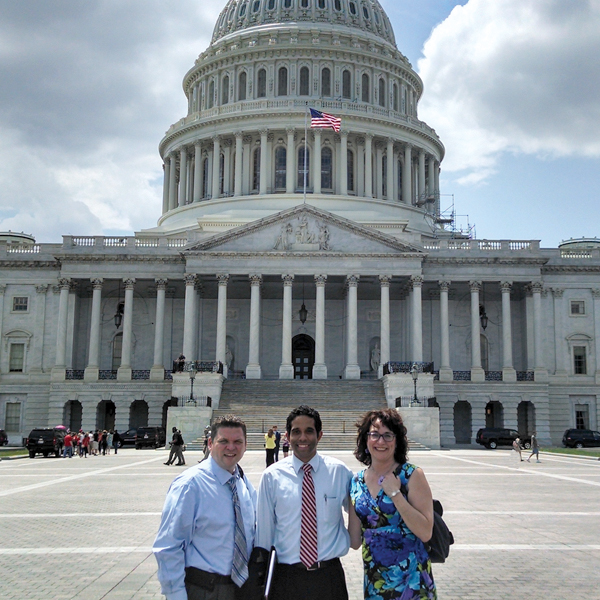News
The Teaching »ĘĽŇ»ŞČË Center Initiative: Funding Residencies, Fueling Renewal, Generating Hope

As the largest Teaching »ĘĽŇ»ŞČË Center in the nation, we are privileged to train doctors who are interested in making a genuine difference in their communities. Thanks to the tireless work of leaders in »ĘĽŇ»ŞČË Medical Education and the support of our elected officials, the Teaching »ĘĽŇ»ŞČË Center program is receiving necessary exposure at the national level, most recently through a research report entitled “Primary Care Residents in Teaching »ĘĽŇ»ŞČË Centers: Their Intentions to Practice in Underserved Settings After Residency Training”.
Its authors: Zohray Talib, MD; Mariellen Malloy Jewers, MIA; Julia H. Strasser, MPH; David K. Popiel, MD, MPH; Debora Goetz Goldberg, PhD, MBA, MHA; Candice Chen, MD, MPH; Hayden Kepley, PhD; Fitzhugh Mullan, MD and Marsha Regenstein, PhD enlisted the feedback of Teaching »ĘĽŇ»ŞČË Center residents from across the nation. Our Wright Center residents contributed their thoughts and experiences.
The misdistribution of provider talent, coupled with the challenging healthcare landscape has led underserved areas across the nation without appropriate access to affordable healthcare. Teaching »ĘĽŇ»ŞČË Center programs have answered the call for physicians in the areas that need them most and play a vital role in training the next generation of providers.
The doctor shortage does not discriminate. Regions across the country – both urban and rural – are in need of primary care. With Teaching »ĘĽŇ»ŞČË Center residents handling approximately one million patient visits over the course of each year, the program has helped establish the foundation necessary for fueling physician renewal. In fact, this year’s most recent report showed that 82% of Teaching »ĘĽŇ»ŞČË Center graduates remain in primary care practice, as compared to 23% of traditional »ĘĽŇ»ŞČË Medical Education graduates – and that’s only the beginning.
Here are five fast facts about the Teaching »ĘĽŇ»ŞČË Center program:
- 742 residents train in 59 HRSA-supported Teaching »ĘĽŇ»ŞČË Center »ĘĽŇ»ŞČË Medical Education programs
- 63% of Teaching »ĘĽŇ»ŞČË Center residents specialize in family medicine
- Teaching »ĘĽŇ»ŞČË Center programs are located in 27 states and the District of Columbia
- Teaching »ĘĽŇ»ŞČË Center »ĘĽŇ»ŞČË Medical Education programs received more than 100 applications for each residency position
- Teaching »ĘĽŇ»ŞČË Center residents will provide more than 1 million primary care »ĘĽŇ»ŞČË visits in 2017 to underserved communities
We are proud that an overwhelming amount of The Wright Center’s graduates choose to practice in underserved areas. Of our most recent graduating class of our Teaching »ĘĽŇ»ŞČË Center National Family Medicine Residency program, 76% chose to practice in a »ĘĽŇ»ŞČËly underserved area; some even chose to sign on with the partner site at which they completed their training in the early stages of their residency.
As an organization comprised of a multidisciplinary staff of providers and administrators, we understand the value of a committed, diversified team as we remain in relentless pursuit of our mission to continuously improve patient care and education in a collaborative spirit to enhance outcomes, access and affordability.
Sustaining Teaching »ĘĽŇ»ŞČË Center funding is a vital step towards The Wright Center’s mission. Federal Teaching »ĘĽŇ»ŞČË Center funding is currently set at $116,000 per resident, significantly lower than the estimated training cost of $157,000. To provide comprehensive healthcare services to patients who need it most, Teaching »ĘĽŇ»ŞČË Center programs need the full support of the federal government and advocates to help them get there. The Wright Center’s team has been passionately lobbying for the expansion of Teaching »ĘĽŇ»ŞČË Center funding on behalf of our learners and our patients who need them most.
Legislation (S. 1754 and H.R. 3394 to reauthorize section 340H of the Public »ĘĽŇ»ŞČË Service Act to continue to encourage the expansion, maintenance, and establishment of approved graduate »ĘĽŇ»ŞČË residency programs at qualified teaching health centers, and for other purposes) has received bi-partisan support and thanks to the lobbying efforts of many, is gaining traction where it matters most. An extension, and possibly an expansion, of sustainable Teaching »ĘĽŇ»ŞČË Center funding can be a catalyst for change, an inspiring demonstration of a republican and democratic collaboration for continued pursuit of the Quadruple Aim — outcomes, access, affordability and joy in practice — in America.
Click here to read the full report.
All facts and figures attributed to the research and tireless efforts of the American Association of Teaching »ĘĽŇ»ŞČË Centers.
